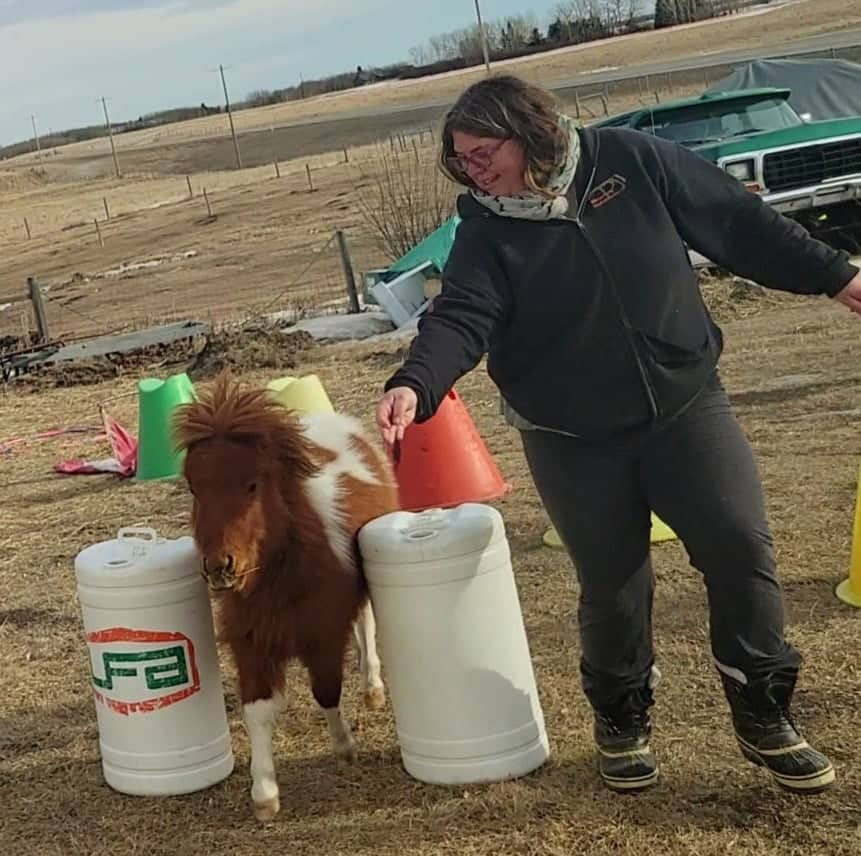The following is an except from my Understanding Your Miniature Horse ebook – fill out the registration at the bottom of this page to purchase the entire ebook and get all the bonuses!
Threshold is the term for when a horse transitions into their FEAR system, triggering the autonomic functions associated with the fight or flight or freeze response.
When we are working with our horses, we need to be aware of the small signs that they are approaching threshold, so we can adjust our approach to keep them comfortable. A horse cannot learn when they are in the FEAR system, so even if we did get the response we’re looking for, they aren’t able
to retain it. As well, you cannot erase a fear memory, only do what is possible to overshadow it, so we want to be very careful not to create any associated with training, or we’ll be struggling to overcome that memory forever.
Signs of approaching threshold may include raised head, widened eyes, flared nostrils, holding breath or snorting, scooting or dancing, but signs will vary depending on the expressiveness of your horse – you need to be familiar with your horse and always watching to see how they are responding.
If you feel your horse is approaching threshold, you can make adjustments to prevent them from going over threshold. Step back, take a deep breath, and try scratching their withers or other favourite spots. Scratching and rubbing has been shown to lower a horse’s heart rate, and will help
activate the CARE system, releasing oxytocin to counteract the FEAR response and allow your horse’s sympathetic nervous system to re-engage.
A good sign that they are beginning to relax is when they lick and chew – the salivary glands are one of the body functions that shuts down during fight or flight, and when they reactivate you’ll see the licking and chewing response.
Other things can influence threshold besides what you’re doing with your horse. Something that usually doesn’t bother your horse at all might one day trigger a FEAR reaction. It’s called trigger stacking, when a number of things build up so that the horse is nearer to threshold before you ever starts, and something that usually is well within their threshold then suddenly sends them over. Maybe it’s a windy day, or their friend moved to another paddock, or something changed in their environment that you
didn’t even notice, but was a big deal to them.
That’s why we need to meet our horse where they are on every single day, and always be aware of the signs they are approaching threshold, so we can make adjustments, both to keep our horse comfortable and able to learn, and also to prevent a big, potentially dangerous, fear response.
REMEMBER: Recognizing the signs that your horse is approaching threshold can help you prevent activation of the FEAR system, during which they cannot learn and will form permanent fear associations with the training. Threshold can change day to day depending on external factors.
Register below to get the Understanding Your Miniature Horse ebook!
